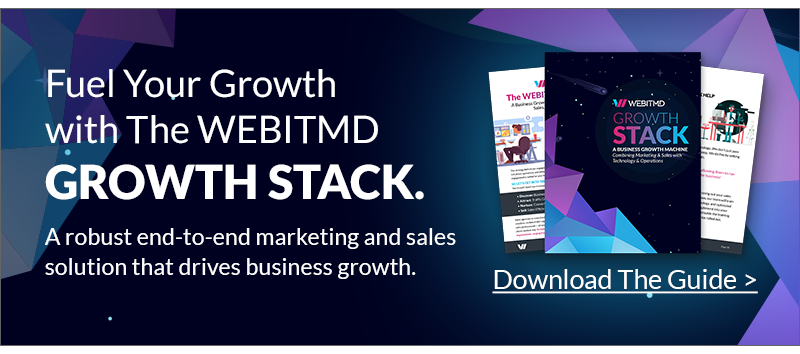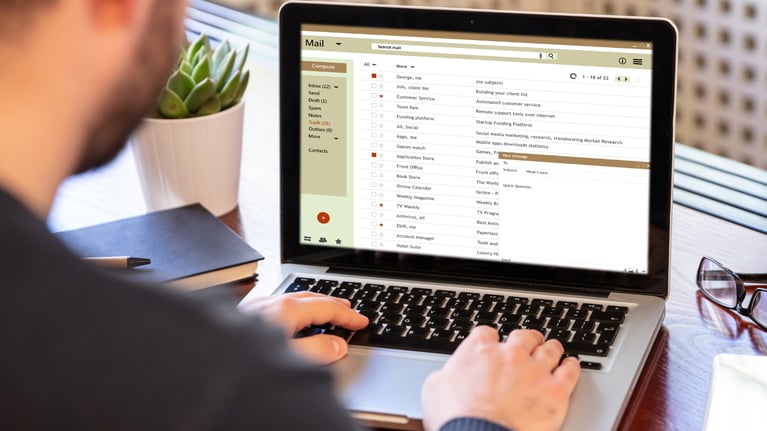Part of being a marketer means planning both short-term and long-term initiatives. Content marketing strategies tend to fall into the latter category.
With the lifespan of the average blog post being about two years, content marketing is a more sustainable long-term traffic source than social media or paid ads. But there is more to it than publishing a few sporadic blog posts here and there.
Building a content marketing funnel requires careful thought and planning to engage leads throughout their journey. The following guide will help you identify gaps or areas of opportunity in your existing content and provide tips and best practices to improve conversions.
How Do I Build a Working Content Marketing Funnel?
Content marketing aims to create different types of content that will guide your visitors from the first point of interaction to the point where they are ready to purchase. Your content funnel should consist of four main areas:
- Top of the Funnel (TOFU): Often referred to as the “awareness” stage, this is one of the first touchpoints when someone encounters your brand. Your goal isn’t to sell to them at this point but to establish trust and educate visitors about a problem.
- Middle of the Funnel (MOFU): Consideration-level content means you are helping the next step of someone’s buyer journey – where they start to explore possible solutions and might even consider specific products or services. This is great for differentiating yourself and conveying tangible results through customer stories and other valuable, data-driven pieces.
- Bottom of the funnel (BOFU): The final stage before purchasing, the decision stage of the buyer’s journey, is that final push to get someone sold on your services. This is where you want to differentiate yourself as a brand and communicate tangible results through customer stories and other valuable, data-driven pieces.
- Customer evangelism: The work doesn’t stop once a sale is made. You want to create content that caters to existing customers and helps them get more value from their purchase. This stage is about building a community and creating word-of-mouth advertising through brand evangelists.
Types of Content for Your Content Marketing Funnel
Different formats work better at various stages of your content marketing funnel. While it’s ideal to customize your content strategy based on what resonates the most with your audience, you can use the following best practices as a foundation to build on:
TOFU Content: Gaining Their Trust
One of the most common types of TOFU content is the blog post. Blogging is the foundation of your content strategy and should take up the bulk of your efforts. It helps your SEO, provides easily accessible content to your readers, and positions your company as a reliable source of information.
Focus on educational content in this stage. Use Calls-to-Action (CTAs) to continue showing your visitors additional content relevant to their problem. Easily digestible formats such as tip sheets and checklists will help you convert visitors at the top of your funnel into qualified marketing leads.
You can also use the email newsletter to engage your blog subscribers further. Showcase people from your company, promote upcoming events and highlight new content to keep your brand top-of-mind and build credibility.
MOFU Content: Keeping Them Interested
After a visitor converts into a lead, you can keep them engaged by showing more in-depth content about a specific solution. Use email marketing workflows to distribute relevant and thought-provoking content offers to segmented lists.
You still don’t want to be salesy. Instead, utilize events like webinars and live Q&A sessions. Also, consider case studies as a way to present success stories without specifically pushing your product or service. Those results prove valuable when nurturing leads toward a purchasing decision.
BOFU Content: Differentiating to Close The Deal
Your leads are deciding between vendors at this point. This is when they’ll be most open to talk with a salesperson. It’s OK to be self-promotional here and discuss specific products or services.
Success stories and product comparisons are effective types of decision-stage blog content. You can also create content around client testimonials and compile data to prove the efficacy of your product and what sets you apart from competitors.
To truly master your BOFU content, communicate with your sales team to understand common questions that come up during the sales process. You can also interview customers to understand what makes your solution different and appealing. This kind of material will act as your “North Star” and guide your strategy at the bottom of your content marketing funnel.
Customer Evangelism: Celebrating Your Advocates
Once you’ve got customers, continue communicating with them through follow-up emails asking them to leave reviews or refer a friend. Referral programs produce some of the most significant returns of any marketing tactic, so make sure you don’t neglect this part of your funnel.
For content, use product or service updates and data reports to reinforce your customers’ value from being with you.
Building Sustainable Traffic with Content Marketing
Building a content marketing funnel requires careful thought and planning about engaging leads at the different stages of their journey. All of your content should work together in harmony to nurture your leads toward a purchase. When done right, you can create a sustainable and reliable source of qualified traffic for your business.
If you’re curious how better to hone each stage of the buyer’s journey, download our Growth Stack Guide for more.









(1).jpg)

.jpg)



![5 Reports to Elevate Your HubSpot Sales Dashboard [+ Examples]](https://2363531.fs1.hubspotusercontent-na1.net/hub/2363531/hubfs/Imported_Blog_Media/6-winning-examples-of-a-hubspot-sales-dashboard-2.png?width=767&name=6-winning-examples-of-a-hubspot-sales-dashboard-2.png)

